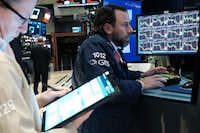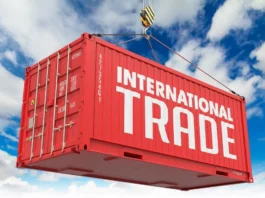
Speaking as a longtime retail investor whose biggest stock investment is S&P index funds, let me tell you why replacing S&P-linked holdings with Dow-linked holdings probably would be a big mistake. I rarely offer specific investment advice because I’m a journalist, not some sort of market genius. But the more I look at where the Dow-S&P differential this year comes from, the more convinced I am that it’s a fluke — and that sticking with the S&P is the right thing to do.
If you take a close look at the numbers, you see that a mere six S&P companies — 1.02 percent of the S&P’s components — accounted for close to 80 percent of the 9.48 percent difference between the Dow and the S&P for the first 11 months of this year.
My numbers — but not my investment conclusions — come from statistics assembled for me by Howard Silverblatt, a senior index analyst at S&P Dow Jones Indices. He’s followed the Dow and the S&P for decades and has helped me learn about the difference between them.
Despite all the stuff that you read, hear and see that calls the Dow and S&P indexes, the Dow average is way different from the S&P 500, which is a true index.
The Dow was created in 1896, back when the only way to come up with a quickly computable stock market indicator was to average the share prices of the 12 issues that the Dow originally had. Later on, the Dow was expanded to its current 30 stocks.
By contrast, when the S&P got started with 500 stocks in 1957, it was possible to track the stock market value of all its components, which is how an index works.
The crucial difference between an index and an average is why there are $5.66 trillion of investments tied to the S&P, but only about $40 billion tied to the Dow. It’s also why the S&P is used as a benchmark by investors and money managers, but the Dow isn’t taken seriously.
In other words, the Dow has big mindshare among retail investors — but approximately zero mindshare among investment pros.
When the Dow first started, its value was calculated by adding up the share prices of its component stocks and dividing by the number of components. But to keep things like stock splits and changes in its component stocks from distorting the Dow, its administrators created something called the Dow divisor. (How the divisor is calculated is a story for some other day.)
Also read: Woman raped by three men claiming to be police officers
The divisor is currently 0.1517. This means a one dollar change in the price of any of its 30 components changes the Dow by about 6.59 points — 1 divided by 0.1517.
Should UnitedHealth Group, whose share price was about $528 as of Thursday’s market close, decide to split its stock five-for-one to get its price down to about $100 to attract small retail investors, its weight on the Dow would fall by about 80 percent, the weight of the 29 other Dow stocks would rise and the divisor would change. But there would be no impact on the S&P.
“Over time the Dow and the S&P correlate,” Silverblatt says, “but shorter-term, due mostly to their weighting, they do not. The current historical large variance [for 2022] is a product of that weighting, where a few specific issues had a significant impact.”
Let me show you how different weightings allowed just over 1 percent of the S&P companies to account for almost 80 percent of the 11-month 9.54 percent difference in the Dow’s performance relative to the S&P.
Two stocks that are included in both market indicators — note that I didn’t say “market indexes” — account for a 1.7 percent discrepancy.
Apple, whose weight on the S&P greatly exceeds its weight on the Dow, accounted for 0.72 percent of the difference — it dragged down the Dow by 0.54 percent, but dragged down the S&P by 1.26 percent. Amgen, whose weight on the Dow substantially exceeds its weight in the S&P, boosted the Dow by 1.11 percent but boosted the S&P by only 0.13 percent. That accounts for 0.98 percent of the difference.
Finally, four companies whose stock is in the S&P but not in the Dow — Amazon, Meta (formerly Facebook), the A and B classes of Alphabet (formerly Google) and Tesla — accounted for 5.79 percent of the difference.
Also read: Business Five Reasons You Shouldn’t Buy A House Right Now
The fact that six companies account for so much of the S&P-Dow disparity is why I’m not taking it very seriously. Should the S&P way outperform the Dow next year for similar reasons, I won’t take that very seriously, either. And neither should you













